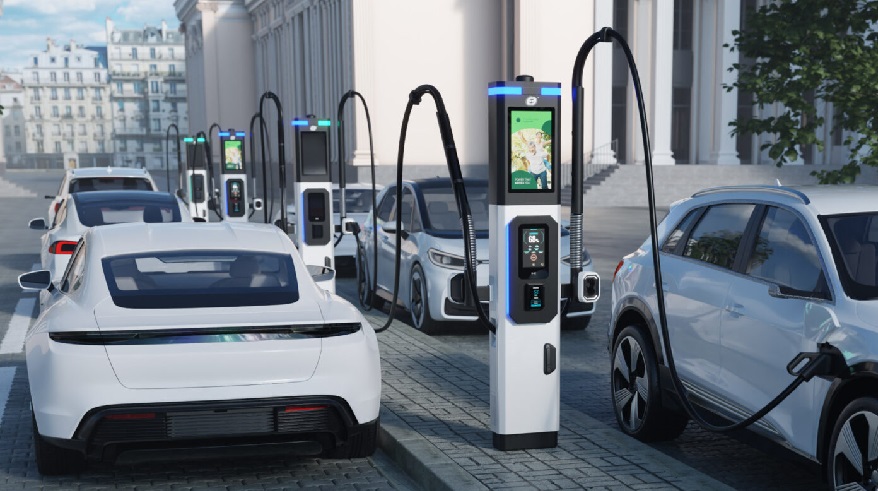In May 2025, Poland reported a significant increase in its charging infrastructure, reaching 5,175 stations and a total of 9,624 points, representing a 50% year-on-year growth.
This development occurs in the context of a strong rise in sales of battery electric vehicles (BEVs), with 2,818 units sold in the fifth month, reflecting an 118% increase compared to May 2024, according to figures from the Polish Automotive Industry Association (PZPM).
In terms of monthly expansion, 283 new stations and 508 charging points were installed, reflecting a 45.8% increase compared to April.
Furthermore, fast charging installations (+100 kW) continue to grow, reaching a total of 731 stations to date.
Regarding the types of chargers, Poland continues to implement both alternating current (AC) and direct current (DC) stations.
By the end of May, AC charging points represented 58% of the total infrastructure, while DC points accounted for 33%.
Is the growth sufficient to meet the AFIR targets in Poland?
Despite the progress, Poland faces challenges concerning the targets set by the Alternative Fuels Infrastructure Regulation (AFIR).
In terms of total power, the country already meets the minimum requirements for the current vehicle fleet, with 511,000 kW available at charging points.
This significantly exceeds the required capacity for the total number of M1 and N1 vehicles, which is set at 190,000 kW and aligns with the increase in the fleet of electric vehicles in circulation.
However, regarding the distribution of infrastructure along the Trans-European Transport Network (TEN-T), there is still a considerable delay.
Two Polish provinces stand out in terms of charger concentration: Silesia leads with 853 stations, followed by Mazovia with 831.
Of the remaining 14 regions, none has more than 500 installations, and only three exceed 400 (Pomerania, Greater Poland, and Lower Silesia).
AFIR stipulates that charging zones must be no more than 60 kilometres apart along the TEN-T network, in both directions of travel.
Despite the expansion, data from the first quarter of the “AFIR Counter” by the Polish New Mobility Association (PSNM) shows that Poland only covers 13% of the TEN-T network requirements.
In this regard, the National Fund for Environmental Protection and Water Management of Poland (NFOŚiGW) has launched support programmes to accelerate this development.
One of these, focused on the construction and expansion of the high-power charging network, has a budget of one trillion zlotys and is open for applications until 31 December 2025.
On the other hand, NFOŚiGW also promotes the development of charging stations specifically for trucks and heavy transport, with a similar budget and an application deadline until 31 August 2025.

“The contracting and construction of co-financed infrastructure projects is a process that takes years, so in practice, it is no longer possible to meet the obligations set for 2025,” states Aleksander Rajck, Board Member at PSNM, when presenting these programmes.
“However, as long as both are properly coordinated and connection procedures are improved, we have the opportunity to get significantly closer to the required targets for 2027 and, in particular, for 2030,” he added.
Thus, Poland is advancing towards meeting the TEN-T network standards and AFIR requirements, although there is still a long way to go to reach the targets for the coming years.
DISCOVER MOBILITY PORTAL DATA
Discover Mobility Portal Data, a new exclusive market intelligence platform offering reliable data and key reports to support smart decision-making across the automotive sector — covering both combustion and electric vehicles, as well as charging infrastructure.
Research, trend analysis, and neatly organised statistics presented with clarity and precision, alongside up-to-date insights — all just one click away.
With Mobility Portal Data, good decisions are on the horizon.
READ MORE
-
La Ley de Movilidad Sostenible es aprobada tras más de tres años de trámites
El Congreso de los Diputados ha aprobado definitivamente este jueves la Ley de Movilidad Sostenible, una normativa necesaria para la recepción por parte de España de 10.000 millones de euros de fondos europeos y que ha requerido más de tres años de tramitación y dos legislaturas para aprobarse.
-
Se cumple la promesa: Aagesen confirma 250 millones para el plan Moves Flotas y Corredores
Respecto a la posibilidad de prorrogar el Plan Moves o lanzar una línea de ayudas semejantes, que permitan impulsar la venta de vehículos eléctricos en España, el Ejecutivo por ahora no ha confirmado esta posibilidad.
-
Llega el chargecloud Day: Estrategias ganadoras para las recargas eMobility
El próximo 4 de diciembre a las 15 h (España), Mobility Portal España y chargecloud celebrarán un evento virtual que reunirá a referentes del sector para debatir los desafíos y oportunidades del negocio de la recarga eléctrica.











